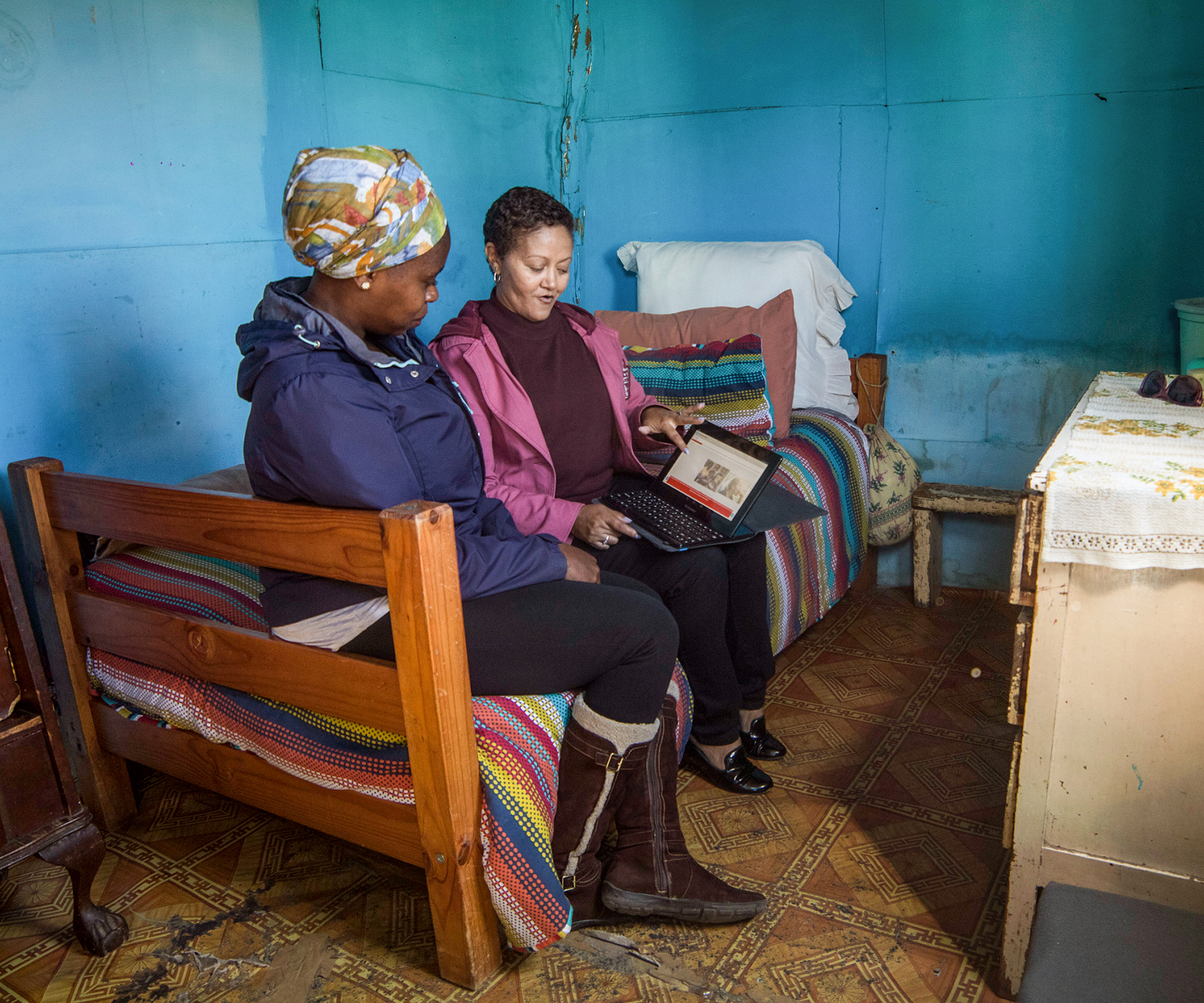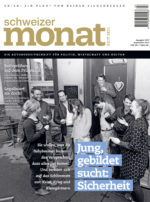
Capitalism for the Poor
Even supporters of capitalism often mistrust freedom when it comes to the economically most disadvantaged. Instead of poverty being managed from above, people need to be empowered to master their own lives.
Lesen Sie die deutsche Version hier.
Long have we lauded the capitalist economic framework for its ability to improve life for most dwelling beneath its invisible hand – by embracing new ideas, new combinations, and new leaders who innovate to deliver economic growth. Capitalism’s instability is seen as a necessary evil: failure foments innovation and eliminates inefficiency; poverty pushes us to aspire, to self-improve. This dynamic and often turbulent system is founded upon a single doctrinal truth: we believe in the private ownership of the means of producing wealth. This precept is buttressed by our liberal political framework which, above all, prizes the freedom of self-determination for individuals who are equal under the laws by which they consent to be governed.
This intersection between personal liberty and personal wealth is most visible in the vast range of wealth management tools available on the marketplace. While varying in the specifics, these tools all help high net-worth individuals visualize their wealth, define long-term goals, identify weaknesses, track progress, and connect to a network of dedicated support personnel. At their fingertips lies the power to take data-driven, real-time decisions to create a better tomorrow for you and your family.
Yet when it comes to poverty, why are we happy to discard our liberal ideals? Why do we insist on privatizing wealth but nationalizing poverty? At the other end of the income spectrum, there’s an equally vast range of poverty management tools which are not so much used by as applied to poor individuals – typically via one-size-fits-all state welfare programs or charity handouts. What would happen if we gave poverty back to the poor, allowing them to define and manage their poverty with the same freedoms and tools as the wealthy enjoy?
Cynics claim that poverty management is too big and complex a task to be delegated to poor people – perhaps believing they haven’t the skills and sense to succeed. After all, poverty is complex: income is only one of many moving parts, along with individual and structural deficits in security, health, sanitation, education, water and more. Perhaps cynics believe that all our anti-poverty efforts to date have been nothing more than tilting at windmills. Or, perhaps they fear that eliminating structural poverty means abandoning capitalism altogether – an unthinkable remedy to many (including myself).
A tool for self-diagnosis
And yet, when has capitalism ever shied away from complexity? Can we find a way to leverage the innovation and creativity inherent in capitalism to experiment with new ideas, and new combinations, to embrace new leaders in the fight against poverty? (Hint: the answer is yes.)
In less than one generation, we can eliminate global poverty. Yes, eliminate. Not reduce it or alleviate its effects. Zero poverty, everywhere and forever. This is no empty pledge – we’re already doing it across 50 countries with 450 organizations.

My team at Fundación Paraguaya developed the Poverty Stoplight app, a color-coded tool defining what it means to be very poor (red), poor (yellow) and not poor (green) in 50 indicators across 6 areas: income and employment; health and environment; housing and infrastructure; education and culture, organization and participation; self-reflection and motivation. The indicators are familiar to anyone well-read in poverty theory, but we didn’t choose them. Our microfinance clients did. They also articulated the thresholds between red, yellow and green in each indicator. A pictorial guide helps households self-diagnose their poverty and produce a color-coded dashboard with detailed, real-time and easy-to-understand data about their strengths and weaknesses. From there, the app’s “Life Map” helps the household decide which areas to tackle, in what order, by when and how.
The Foundation’s role is to activate a family’s agency to get to green in all fifty indicators – either by connecting them to our evolving bank of solutions or other members of their community. After all, each family has its own constellation of deprivations, and no two families are poor in the exact same ways. Horizontal learning networks between families can be just as powerful as any state-run welfare program I’ve ever seen. Perhaps even more so.
You’ll notice that I’m using the term “family” as my unit of analysis (broadly defined as those living under one roof). It’s true that social scientists (and liberal political theorists) focus on individuals, not households – but it’s also true that we’re deeply embedded in kinship and social networks that shape our decisions and provide us with resources. We’ve seen that when families work together to self-diagnose their poverty and create their action plan, they start by leveraging idle resources within the household.
«In less than one generation,
we can eliminate global poverty.»
For us, talking about households leads to interesting opportunities. First, it changes the scale of the problem: at a rate of 3.8 people per household, Paraguay no longer has 7.5 million people but 1.9 million households. This is no sleight of hand; the perceived size of a problem directly and inversely changes our confidence that we can solve it.
Second, talking about households also opens the door to effective coordination between government and the charity sector. Most bring unidimensional solutions to a multidimensional problem: vaccines for kids; business training for women; agricultural skills for men. Yet none of these efforts unfold in a vacuum. Healthier kids equal more time for the mother to work; a more business-savvy mother finds better ways to sell her husband’s crops. If we expect families to work together to eliminate their poverty, the same should apply to organizations helping them succeed.
Mentoring families
Once we undertake this level of coordination, what would it take to eliminate poverty in Paraguay in five years? It’s not a rhetorical question. We have the self-diagnostic tool, mentoring methodology and data platform. Now we need the moral imagination and the political will to use them at scale.
I’ve done the math: 1.9 million families could get themselves to green in 5 years if we mobilized a network of 10 000 mentors who each supported 200 families. We don’t need to create new jobs – we just need to integrate new tasks into existing jobs. Paraguay has 340 000 public servants. Those already working closely with families (teachers, doctors, nurses) simply need the right training and incentives to deliver additional services. We’ve seen successful examples of this in other contexts: witness Finnish postal workers cutting customers’ lawns on Thursdays, or French postal workers checking on your elderly relatives on their rounds.
The private sector is the final piece of this multistakeholder, multisector approach to eliminating multidimensional poverty. For business, Poverty Stoplight is more than goodwill corporate charity – imagine handing your HR manager a powerful productivity tool to target issues that keep workers from reaching their potential. For the companies we work with, it’s not just a boost to Return on Investment – it’s a wake-up call. Imagine a supermarket finding 20 percent of staff were yellow or red in food. Or a bank seeing that 90 percent were red in savings. Now imagine supporting your suppliers to get to green so you can minimize future supply chain disruptions.
The challenges of tomorrow are immune to yesterday’s solutions. Irrespective of whether the capitalist economic framework created the problem in the first place, the weight of responsibility for eliminating global poverty is shifting from those with power and privilege to those without. Let’s embrace not only the idea of a world without poverty, but the challenge to play our part in making it happen.













